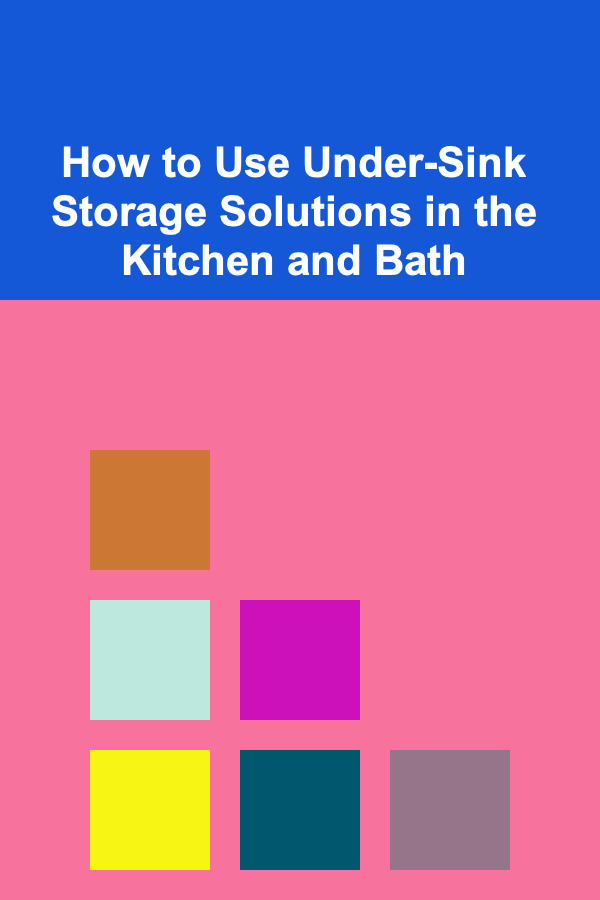
How to Create Textured Collage Art Using Found Objects
ebook include PDF & Audio bundle (Micro Guide)
$12.99$6.99
Limited Time Offer! Order within the next:
Not available at this time

Creating textured collage art using found objects is a wonderful way to combine creativity and sustainability. Found objects are materials that you collect from your environment, whether they be bits of paper, fabric, metal, plastic, or natural elements such as leaves and stones. These objects, often discarded or overlooked, can be transformed into stunning works of art. In this guide, we'll explore how to make textured collage art using found objects and offer insights into techniques, materials, and tips to help you unleash your artistic potential.
Why Choose Found Objects for Collage Art?
Found object collage art offers a unique opportunity to create art from items that may otherwise go to waste. Not only is this practice environmentally friendly, but it also adds an element of surprise and creativity to the artistic process. Working with found materials encourages you to think outside the box and experiment with textures, colors, and forms that you might not encounter in traditional art supplies.
Some reasons why you might choose found objects for collage art include:
- Sustainability: You recycle and repurpose materials that would typically end up in landfills.
- Textural interest: Found objects introduce physical texture into your artwork, giving it a three-dimensional quality that flat collages often lack.
- Narrative depth: Using everyday objects can bring a personal or social message to your artwork, connecting the viewer to the objects' histories and meanings.
- Creativity: There are no rules when it comes to found objects. The more unusual or unexpected the materials, the more interesting your final piece will be.
Gathering Materials for Your Collage
The first step in creating your textured collage is gathering the right materials. Look around your home, your environment, or even a local thrift store to find objects that speak to you. Consider materials that have different properties---rough, smooth, shiny, matte, heavy, light, etc. Some examples of found objects to use in your collage include:
- Paper items: Old magazines, newspapers, receipts, ticket stubs, or scraps of cardboard. Each piece will bring its own texture, color, and narrative.
- Fabric: Scraps of clothing, old linens, or fabric remnants from other projects. Textiles add softness and warmth to your work.
- Nature: Leaves, flowers, bark, twigs, pebbles, and even sand can bring an earthy texture and a sense of connection to the natural world.
- Metals: Pieces of aluminum, foil, nails, washers, or other metal objects can give your collage a modern, industrial feel.
- Plastic: Bottle caps, plastic wrapping, or colorful plastic toys can offer vibrant textures and a playful edge.
- Wood: Small sticks, twigs, or wooden cutouts can bring an organic feel to your collage.
- Miscellaneous objects: Beads, buttons, broken jewelry, lace, thread, rubber bands, or any other small, intriguing object can make excellent additions.
Take the time to collect objects with varying shapes, sizes, and textures. The more diverse your materials, the more depth and variety your collage will have.
Preparing Your Workspace
Before you begin assembling your textured collage, it's important to set up a dedicated workspace. Here are some tips for preparing:
- Protect your surface: Use newspapers, a plastic tablecloth, or a cutting mat to cover your work surface. Collage art can get messy, especially if you're using glue, paints, or other materials.
- Organize your materials: Lay out your found objects in front of you. Keep them organized so that you can quickly find what you need while you're working.
- Keep essential tools handy: Have your glue, scissors, tweezers, brushes, and other necessary tools within easy reach.
- Lighting: Make sure your workspace is well-lit to help you work efficiently and accurately. Good lighting also ensures that you can see the details and textures of your materials clearly.
Assembling the Collage
Once you've gathered your materials and prepared your workspace, it's time to begin assembling your textured collage. Here's how to approach the process:
1. Start with a Base Layer
Most collages begin with a background layer to anchor the composition. You can use paper, canvas, or even cardboard as your base. The background doesn't need to be overly detailed but should complement the objects you plan to use. You can paint, draw, or apply a textured material like fabric or sand to give the background some life.
2. Arrange Your Objects
Before gluing anything down, experiment with different arrangements of your found objects. Layering is an essential part of creating a textured collage, so feel free to overlap pieces and create depth. Pay attention to the balance of light and dark colors, smooth and rough textures, and large and small shapes. Some tips for arranging your objects include:
- Create focal points: Choose one or two areas of the collage where you want the viewer's eye to be drawn. Arrange objects in these areas to create visual interest.
- Use repetition: Repeating a particular shape, color, or texture can help tie the composition together and create harmony.
- Vary the heights: Place some objects closer to the surface (using multiple layers of glue or foam) and others flat to the background to create dimension.
3. Experiment with Texture
The beauty of found object collages is the ability to play with texture. By varying the materials you use, you can create a rich, tactile experience for the viewer. Consider the following:
- Rough textures: Materials like sandpaper, fabric, or bark can add rough, tactile elements that contrast with smoother objects like paper or glass.
- Smooth textures: Items like buttons, beads, or glossy paper can provide visual contrast and balance rougher elements.
- Layered textures: Combine multiple textures within one object or area. For instance, you might place a piece of fabric underneath a layer of magazine clippings for a unique multi-dimensional effect.
4. Glue the Objects in Place
Once you're satisfied with the arrangement, it's time to glue everything down. Choose an adhesive that works well with your materials. For example, PVA glue or Mod Podge works well for paper and fabric, while hot glue is a better choice for heavier or more rigid objects like metal or wood. Apply glue sparingly to avoid excess that could seep out from under your materials.
Be sure to press down each object firmly as you glue it, ensuring that it adheres well to the surface. If necessary, hold the objects in place for a few seconds to ensure a strong bond.
5. Add Layers and Detailing
Once the main elements are glued down, you can add additional layers to create more depth. This could include using more paper, fabric, or even paint to enhance the piece. You can also use markers, pens, or paint to add fine details, textures, or even words to the collage. These small touches can elevate the complexity of your artwork and provide additional visual interest.
6. Finish with a Protective Layer
To ensure your collage lasts and remains vibrant, consider applying a protective layer over the finished piece. Mod Podge or varnish works well for this. These finishes will help seal in the materials, prevent them from falling off, and protect your artwork from environmental damage.
Creative Ideas for Found Object Collage Themes
The possibilities for creating textured collage art using found objects are limitless. Here are a few ideas for themes to inspire your next project:
- Memory Collage: Use old letters, photographs, ticket stubs, and other personal items to create a collage that tells a story or evokes nostalgia.
- Nature-inspired: Create a piece that explores the beauty of nature, using leaves, flowers, and other natural materials.
- Abstract Art: Focus on shapes, colors, and textures rather than representation. This type of collage allows for total creative freedom.
- Mixed Media: Combine found objects with other art forms, such as painting, drawing, or digital art, to create a truly mixed media collage.
- Social Commentary: Use found objects to comment on societal issues, such as consumerism, the environment, or the passage of time.
Conclusion
Creating textured collage art using found objects is a rewarding and eco-friendly way to express your creativity. By repurposing everyday materials, you can craft unique and meaningful artwork that tells a story and evokes emotion. The beauty of this art form lies in its limitless possibilities, allowing you to combine various textures, colors, and shapes into a one-of-a-kind masterpiece. So, gather your materials, embrace the unexpected, and get started on your next textured collage today!

How to Create a Family Command Center in Your Home
Read More
How to Declutter Your Living Room and Keep It Organized
Read More
How to Ensure Your Rental Property is Compliant with Local Laws
Read More
How to Make a Retirement Planning Checklist for Post-Retirement Budgeting
Read More
How to Use Under-Sink Storage Solutions in the Kitchen and Bath
Read More
How To Navigate Open-World Games Effectively
Read MoreOther Products

How to Create a Family Command Center in Your Home
Read More
How to Declutter Your Living Room and Keep It Organized
Read More
How to Ensure Your Rental Property is Compliant with Local Laws
Read More
How to Make a Retirement Planning Checklist for Post-Retirement Budgeting
Read More
How to Use Under-Sink Storage Solutions in the Kitchen and Bath
Read More